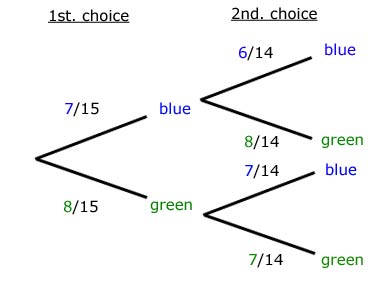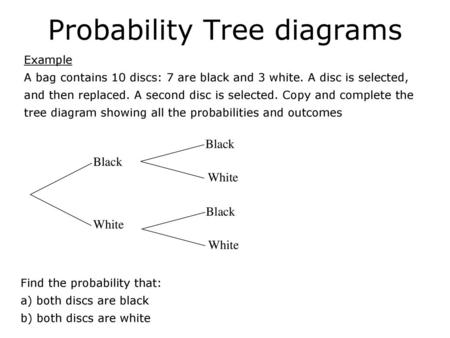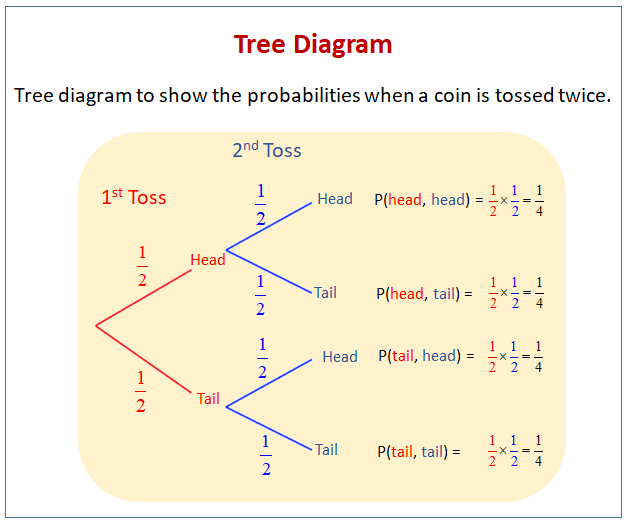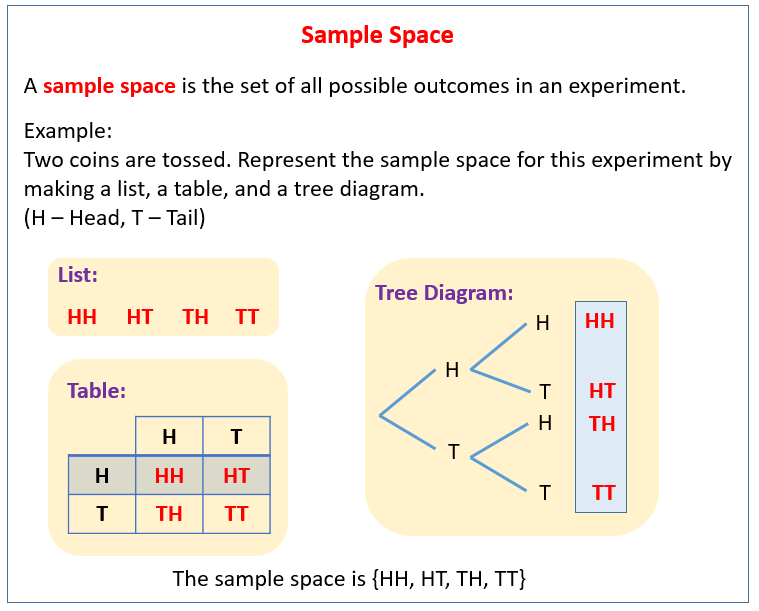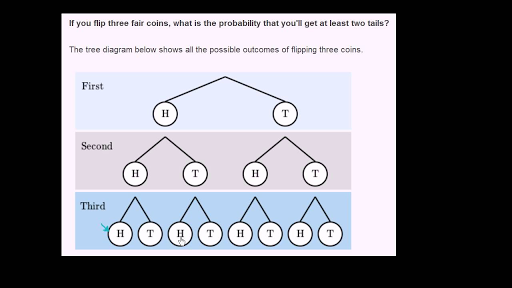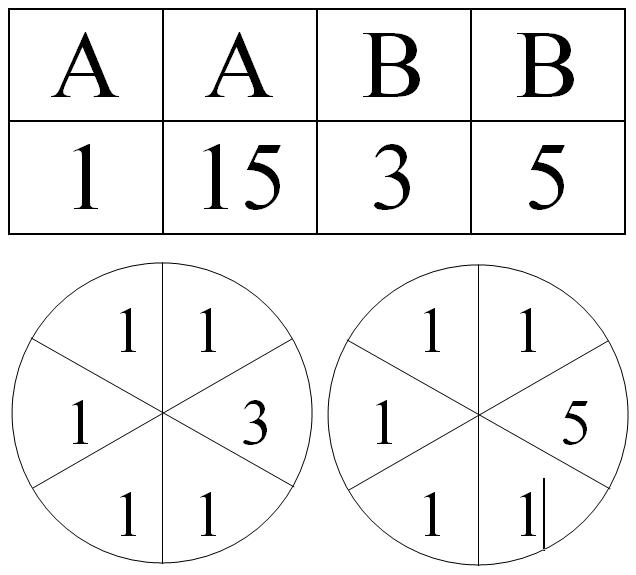Marble Simple Probability Examples Trees
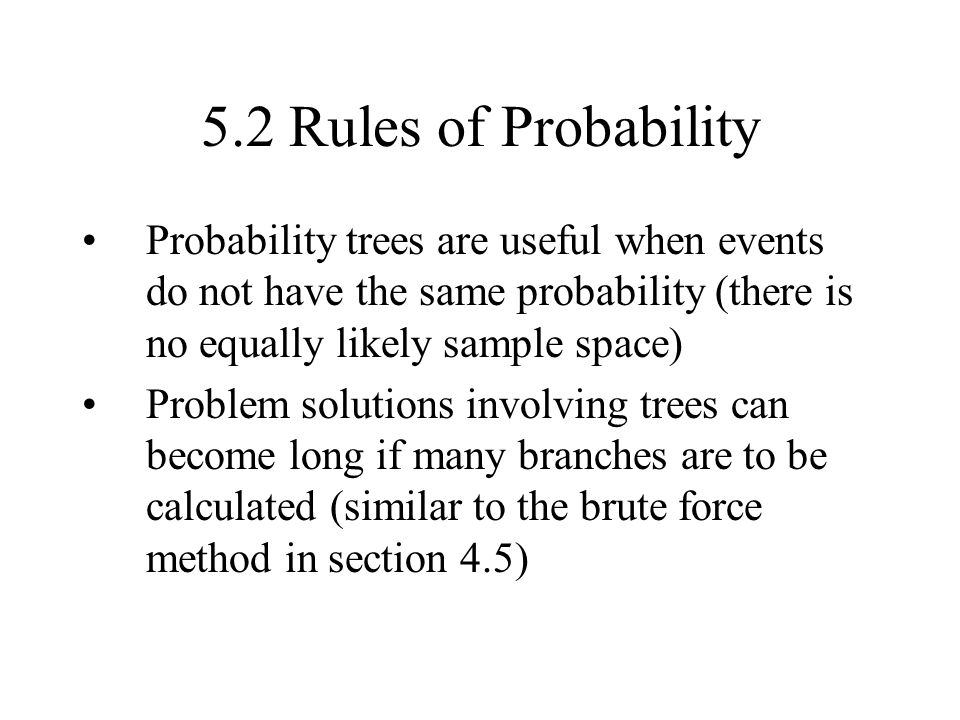
We calculated p drawing a non red 455.
Marble simple probability examples trees. We ll use the following model to help calculate the probability of simple events. One ball is picked out and not replaced and then another ball is picked out. The probability is 1 3 for each of these. Problems demonstrate non conditional and cond.
Find the probability of pulling a yellow marble from a bag with 3 yellow 2 red 2 green and 1 blue i m assuming marbles. And so this is sometimes the event in question right over here is picking the yellow marble. In this example we are figuring out the probability of randomly picking a non blue marble from a bag. Probability is the chance or likelihood that an event will happen.
Red yellow and blue. The first red a jar contains 30 red marbles 12 yellow marbles 8 green marbles and 5 blue marbles you draw and replace marbles 3 times. One example uses with replacement and one example uses without replacement. This math education video demonstrates how to calculate the probability of removing colored marbles from a bag.
The first ball can be red yellow or blue. This is called probability without replacement or dependent probability. Dependent events are what we look at here. What is the probability the third marble is the first red marble.
We can use a tree diagram to help us find the probability. A coin is biased so that it has a 60 chance of landing on heads. Use these examples of probability to guide you through calculating the probability of simple events. The sample space for the second event is then 19 marbles instead of 20 marbles.
So they say the probability i ll just say p for probability. This video goes through 2 examples of probability. Again we ll have to think about the possible outcomes first. It is the ratio of the number of ways an event can occur to the number of possible outcomes.
If it is thrown three times find the probability of getting a three heads b 2 heads and a tail c at least one head. This is the currently selected item. There is a 2 5 chance of pulling out a blue marble and a 3 5 chance for red. Probability tree diagrams for independent events how to solve probability problems using probability tree diagrams.
We can go one step further and see what happens when we pick a second marble. For example a marble may be taken from a bag with 20 marbles and then a second marble is taken without replacing the first marble. There are 3 balls in a bag. This means the first two are not red.




